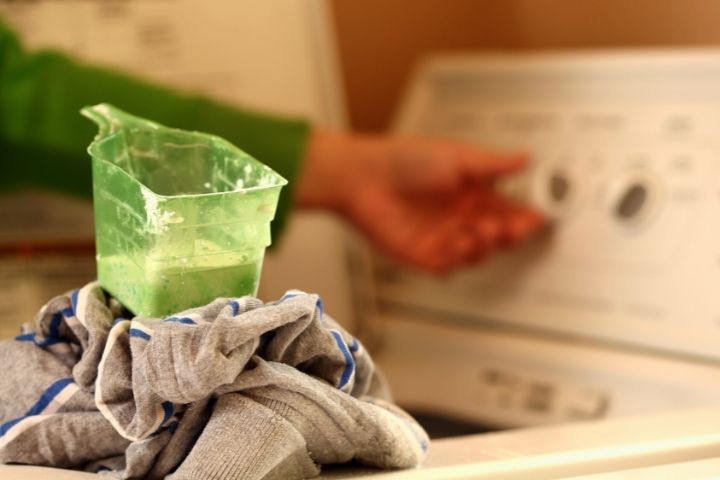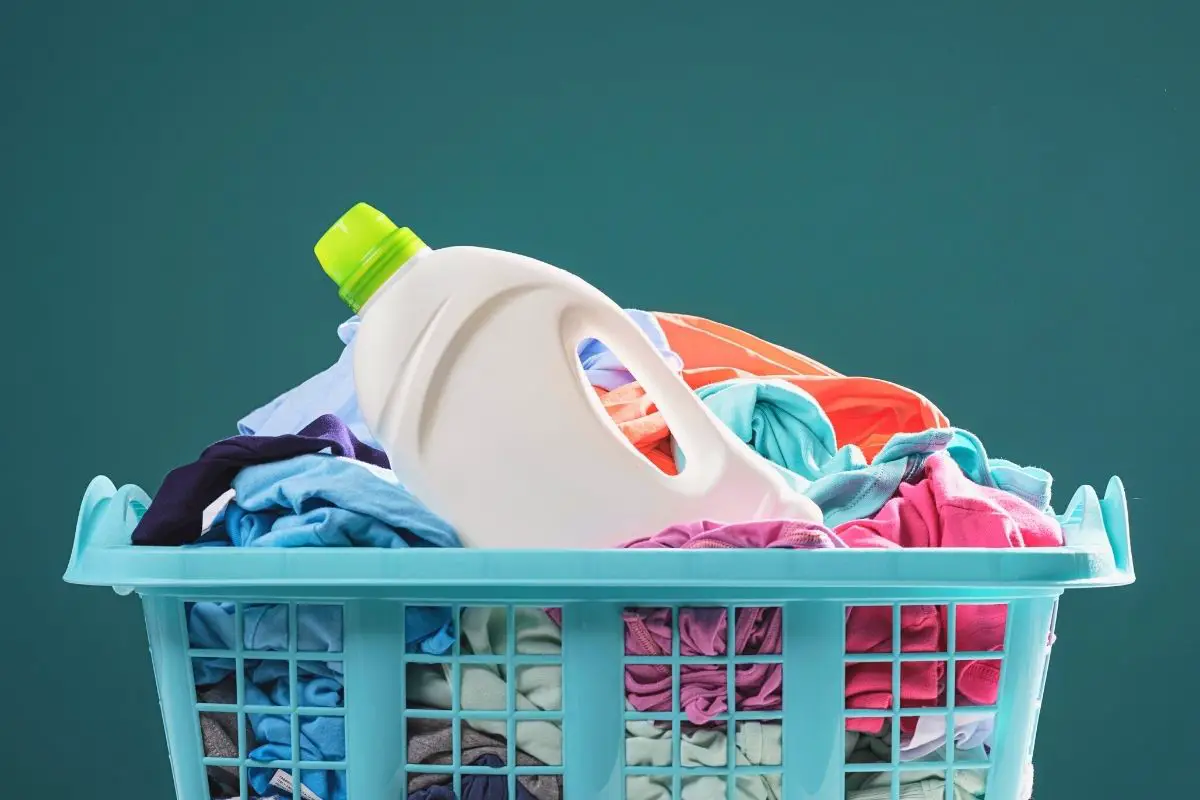How Laundry Detergents Impact the Environment | Choosing the Best Eco-friendly Detergent
We hardly put much thought into the mundane task of doing laundry. But the fact is chemicals are a necessary aspect of our lives in various forms, including H2O or O2.
The fact is, that various chemical compounds in laundry detergents can seriously contaminate our water supplies and the aquatic ecosystems.
With an endless variety of cleaning products on the market, determining each of their actual impacts on the environment is a knotty task. However, we can make some broad classifications to understand their far-reaching environmental impacts.
While there is no perfect solution (soapberries are as close as you get!), we can try to do minimise our laundry impact.
Let’s take a closer look at the compounds that we are flushing down our home’s wastewater system while doing laundry.
Related Articles: Earth Breeze vs Tru Earth and Earth Breeze vs Dropps
What Are the Components of Detergent That Can Harm the Environment?
I couldn’t believe my eyes when I read this for the first time…
Simply washing clothes made from synthetic fibers is damaging to the environment!

The process of washing releases millions of small plastic particles or microplastics that ultimately end up in the ocean. And ultimately that ends up in the food chain, i.e. in your Seafood Ceviche.
Ever wondered how the cleaning action of detergents functions?
Basically, the organic compounds in detergents are both polar and nonpolar. That means they act as both hydrophilic and hydrophobic. This allows them to mix effectively with oil and grease.
So detergents can be anionic, cationic, or even non-ionic depending on their chemical composition.
A common laundry detergent has four main components. These are surfactants, builders, bleach, and enzymes. Other than that they also contain various dyes, fillers, and fragrances.
Surfactants are the primary components of laundry detergents and home cleaning supplies. They are chemicals that determine the type of electrical charge on a detergent.
Honestly, it’s difficult to wrap my brain around all the detailed chemical actions of surfactants.
In short, they have a positive impact on the cleaning, wetting, and foaming properties of a detergent.
Builders are compounds that serve multiple purposes. Firstly, they remove Ca2+ and Mg2+ ions from water to minimize water hardness. In addition, they enhance the performance of the surfactants and also generate an alkaline environment.
The role of bleach and enzymes is to help in removing stubborn stains and brightening the fabric.

Time to take a look at the adverse effects of the chemical agents in detergents on the environment.
Surfactants
Surfactants can have a damaging effect on aquatic life depending on their concentration. When the concentration of surfactants in water reaches 0.1mg/L the water appears foamy.
The insulating layer of foam prevents the exchange of oxygen between the water and the atmosphere. This results in a drop in the concentration of dissolved oxygen and kills the microorganism present in the water.
Surfactants also affect the protective mucus layer that coats the fish and damages it. In addition, they reduce the surface tension of water which causes the aquatic life to absorb more pollutants like pesticides. This can cause gill damage in fish and reduce their capacity to absorb oxygen.
Moreover, a high concentration of surfactants also affects the breeding ability of aquatic creatures.
As per the EPA, surfactants can have an adverse impact on the endocrine systems of humans and animals. In short, they can disrupt the normal physiological functioning of the human system.
Surfactants can also decrease the efficiency of wastewater treatment processes. They affect various processes like aeration, sludge nitrification, and sedimentation which are vital for pollutant treatment.
Even worse, some surfactants can break down into more toxic compounds. That can impact the water body negatively for a longer duration.
With time, these compounds can also enter the soil and lead to the degradation of the soil structure. As a result plant life in the area is adversely affected.

Phosphate Compounds
These compounds are often used as builders in detergents. Their high concentration can have significant adverse effects on the ecosystem’s health.
Phosphate compounds can lead to an abnormal growth rate of algae and cyanobacteria. This can result in a sharp drop in the level of oxygen in the water, resulting in eutrophication. It can lead to a mass decline in the fish population.
In the 70s and 80s, many countries imposed restrictions on the use of phosphates in detergents. These included Japan, Canada, and several European countries. While there are no specific regulations in the US and Australia, voluntary agreements between industries have restricted the use of phosphates in detergents to a large extent.
However, there are some gaps in the regulations. For example, in some countries, the use of phosphates in laundry detergents is restricted. However, the same is not done for dishwasher detergents.
Packaging
The packaging function plays an important role throughout the supply chain of detergents.
Generally, laundry detergents are packaged in plastic containers that are mostly non-recyclable.
Sadly, this plastic waste ends up in landfills and will remain there for the next few centuries. Under prolonged exposure to sunlight, plastic emits greenhouse gases like methane and ethylene
Besides, the residual chemicals leaching out of these packages also pollute the soil and damage the environment.
Let’s not forget that producing these plastic containers in the first place is also an energy-intensive process. Since it depends mainly on fossil fuels the process contributes to the production of greenhouse gases.

And even if some of these plastics can be recycled, that process requires energy and generates greenhouse gases too.
There are other hidden costs as well.
The process of plastic production requires the extraction and transport of fossil fuels. In fact, it’s one of the energy-intensive industries that generate the highest amount of greenhouse gases.
But there is even more.
Consider the process of extraction, refining, and consumption of fossil fuels used in the transportation of detergents through the entire supply chain. These processes account for millions of metric tons of carbon dioxide being released into the atmosphere every year.
How Do Soaps and Detergents Affect the Environment in the Post-pandemic Era?
The pandemic has increased the use of hand soap and cleaning detergents globally. In reality, soap sales figures doubled in 2020 when compared to 2019.
As we get more used to washing our hands frequently, we generate larger amounts of wastewater, causing major challenges for wastewater treatment.
First, let’s understand that the chemical composition of detergents is not similar to soap.
Detergents are totally synthetic chemicals, most of which are non-biodegradable. But the prime ingredients in a natural soap are vegetable oils and animal fats generated from organic sources and other additives.
Beyond that, there are synthetic soaps that are mostly petroleum-based and have a significant aquatic toxicity potential. They contain compounds like TCS and SLS which are harmful to the human system as well as the environment.

Synthetic soaps contain some amount of surfactants too. So their impact on the environment can not be ignored. Due to the higher level of wastewater discharge, the physicochemical properties of water bodies can get altered at a faster rate.
In addition, the antibacterial and antifungal agents used in soaps are also an additional cause of concern for the ecosystem.
To mitigate the environmental risks, multiple steps need to be taken. The industry should focus on the use of ecological components that are ecologically sustainable for soap and detergent production. The use of recycling and eco-friendly packaging by the manufacturers is also necessary.
Minimizing the Environmental Impact of Detergents
The good news is, some of the leading companies are taking active steps to prevent environmental damage from surfactants. Procter & Gamble, a high-volume producer of laundry and cleaning products has stopped using nonylphenol ethoxylate surfactants. Unilever has stopped using NPEs (nonylphenol ethoxylate).
One of the easiest ways to avoid the environmental effects of detergents is by using eco-friendly alternatives that have plant-based ingredients. The lesser the petroleum-based products a detergent contains, the better it is. Avoid detergents that use chemical fragrances.
Beyond that, choose detergents that come in biodegradable or compostable packaging. Choosing products with recycled paper packaging or eco-friendly detergent pods is a good option.
When comparing detergents, check and compare the ingredients to pick sustainable options.

However, many manufacturers in the US don’t mention all the ingredients in a laundry detergent.
One of the best options is to look out for products that bear the EPA Safer Choice label. These are chemical compounds that have the minimum environmental impact. You can also take a look at the Safer Chemical Ingredients list to find out more.
Most importantly, we need to be aware of all the chemicals that pollute the environment. That way we can choose the right alternatives that have a minimum impact on the planet.
Frequently Asked Questions
Is detergent environmentally friendly?
A synthetic detergent has various chemical compounds that are not environmentally friendly. Unless you use a detergent that’s made from plant-based ingredients or has an EPA Safer Choice label, these chemicals can be damaging to the environment.
How does detergent affect the environment?
The primary ingredient in detergents is a chemical called surfactant. These have multiple negative effects on aquatic life and can contaminate water bodies. Also, the plastic packaging of detergents is a major contributor to the emission of greenhouse gases and global warming.
What is the best detergent for the environment?
There is plenty of eco-friendly brands that manufacture all-natural detergents. These are free from environmentally harmful chemicals and come in recycled packaging. Other than that, you can also use plant-based cleaning solutions that are completely safe for the environment.





